Marjoram: useful properties, preparation and storage
It is customary among the people to talk about marjoram as a plant: "strengthening the heart and enlightening the mind", it has long been used in folk medicine and is regularly added to various dishes to improve the taste. Translated from Arabic, the spice is translated as "incomparable", and in Greece, the plant was credited with the miraculous properties of an aphrodisiac. It was believed that marjoram added to wine is able to awaken love feelings.
Content
- Description of the plant
- Marjoram composition
- Useful properties and contraindications
- Application area
- Procurement and storage
Description of the plant
There are two types of marjoram - leaf and flower, which can grow as branched perennial shrubs and as annual small-leaved plants. The homeland of marjoram is considered to be the Central European countries. And also the plant is actively cultivated in West Asian countries. Reproduction takes place by means of seeds that are germinated in greenhouse conditions and transplanted into open ground as seedlings.
Flower petals and green leaves are rich in essential oils with a spicy, sweetish and slightly bitter scent.
Marjoram belongs to the genus origanum and is related to oregano... The plant is represented by low bushes with erect shoots, covered with small oblong or spatulate leaves.
Small five-petal flowers of white, pinkish or reddish color are collected in paniculate inflorescences. In place of each faded flower, fruits are formed, similar to smooth oblong nuts.
Marjoram composition
The secret of the usefulness of marjoram lies in its composition. The spice is rich in essential oils, camphor, pinene, sabinene, phenol, terpene and tannins. Young leaves are beneficial thanks to carotene and pectin, as well as rut, pentosan, and tannins. The plant and useful elements are contained in the periodic table: iron, potassium, silicon and phosphorus. It is also rich in vitamins B, PP, H, A, C and E.
But scientists to this day cannot unravel the secret of marjoram, namely, determine the substances that endow the plant with a characteristic aroma.
The essential oil contains terpinene, sabinene, barneol, terpineol, phenone and foam, as well as the elements magnesium, calcium and potassium. Most of the oil can be collected from the flowers of the plant. Ancient healers unraveled the usefulness of marjoram and began to actively and successfully use it to treat rheumatism, runny nose, kidney stones, and they also noted that taking the spice improves memory and brain function, and therefore has a positive effect on the cardiovascular system. In addition to decoctions and mixtures, beer and snuff mixtures were prepared on the basis of marjoram.
Today, traditional healers continue to practice marjoram treatment. It has been found that the substances and elements contained in the spice can help with:
- gastric disorders
- respiratory system diseases
- rheumatism
- insomnia
- depression
- nervous disorders
- diseases of the liver, kidneys and gallbladder
Useful properties and contraindications
Useful properties of marjoram:
- Women are advised to use the plant to regulate the menstrual cycle and reduce soreness.
- Marjoram acts as the basis of balms and ointments that treat runny nose and infectious diseases in childhood, have a healing effect, eliminate inflammation, dissolve boils and purulent formations.
- Also, ointments have a warming effect and help well in the treatment of dislocations and joint pain.
- The general strengthening effect of the spice on the human body was also noted, therefore it is often taken as a preventive measure. In medicine, it is often practiced to prescribe spices to people suffering from diabetes mellitus and recently had a heart attack.
- Rutin, a high concentration of which contains young leaves of the plant, strengthens and cleanses blood vessels, therefore the spice is actively used in the treatment of varicose veins and thrombophlebitis. And the elements of iron, copper and manganese help to improve the blood formula and purify it.
- Majors are often taken as a pain reliever for toothaches and headaches, migraines and cramps.
- The plant is a powerful antidepressant that helps to improve overall well-being and strengthen immunity.
- Thanks to these qualities, marjoram is popular as an antiviral agent that can resist colds.
- The spice can be used as a salt substitute, which is why the plant is often included in salt-free diets. Also, marjoram is high in calories, so it suppresses hunger well. This quality is appreciated in the formulation of weight loss diets.
One hundred grams of green mass of a plant contains about forty grams of carbohydrates, 13 grams of protein and 7 grams of fat, and relatively little water - about eight grams.
Who is contraindicated in marjoram:
- Due to the tannins contained in marjoram, they should not be abused. With uncontrolled intake of spice-based products, headaches and depression of mood are noted.
- Doctors do not recommend taking marjoram for women during pregnancy and lactation, because tannins affect the central nervous system and can cause irreversible effects in the child's body.
- There are cases of allergies in case of individual intolerance to the components of the spice.
- Also, marjoram should be taken with extreme caution by people suffering from hypotension.
Application area
The area of application of marjoram is quite extensive: it is used in medical and culinary practice in the form of various compositions and as components.
In medicine:
- marjoram is taken in the form of an infusion: for half a liter of boiling water, two teaspoons of flowers or dry seasoning are enough. The tool should be infused for five minutes, after which the drink is filtered. The dosage of the infusion depends on the age and severity of the disease. But usually two glasses of marjoram tea are prescribed per day;
- as part of ointments that are effective in treating sprains, joint pain or a runny nose. To prepare the ointment, you need to dissolve dried marjoram in alcohol (1: 1), add the same amount of butter or animal fat (goose, lamb, badger) and simmer in a water bath for 15 minutes. The cooled mixture should be stored in the refrigerator and, if necessary, rubbed into problem areas.
In cooking:
- The spice is actively used in the industrial production of cheese to improve the taste of meat and fish products. The plant can be used both fresh and dried. The spice has a pungent taste and a persistent aroma.
- The plant is actively used for the preparation of salads, mushroom, legumes, vegetable, fish and meat soups. The seasoning goes well with almost any food and product. Meat flavored with marjoram is more aromatic, juicy and tender.
- In European countries, it is important to use the plant in the manufacture of beer, wine and some soft drinks. These traditions were adopted from the ancient brewers.
- The spice is often added to canned products. Salted with marjoram have a pleasant taste zucchini, squash, tomatoes, cucumbers and pepper.
Procurement and storage
The green mass, which is the raw material for the seasoning, can be removed twice a season: in the middle of summer and at the beginning of autumn. Harvesting should be carried out only in dry weather, so as not to reduce the quality characteristics and preserve the usefulness of the product.
It is recommended to dry greens by hanging them in bunches in a ventilated area.
Store the dried spice in tightly sealed containers. Then useful qualities persist for a long time. The flowers are cut at the time of active flowering, cutting off the peduncles at a height of five centimeters. It is important to collect at the same time from your garden. Drying of herbs is carried out in darkened, well-ventilated rooms, because essential oils tend to quickly evaporate in the sun.
Storage of raw materials is possible in glass, porcelain or clay tightly sealed containers. From fresh parts of the plant, alcoholic tinctures can be prepared, which can remain useful for a year. In addition, marjoram is an unpretentious plant and can be easily cultivated on a windowsill. The main thing is to provide the plant with the necessary level of warmth and humidity, and in response to a useful culture to endow the whole family with a decorative look and strong immunity.
More information can be found in the video:



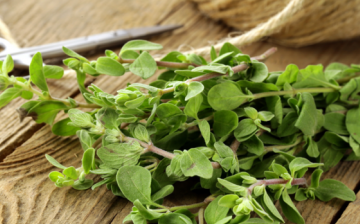

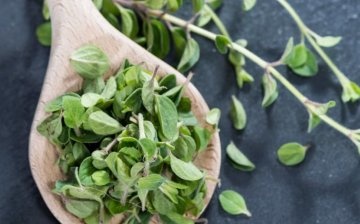
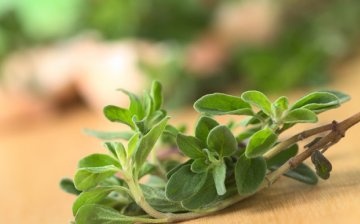
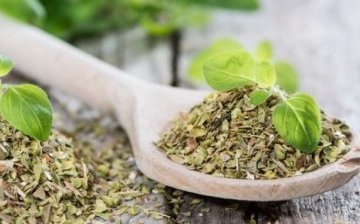







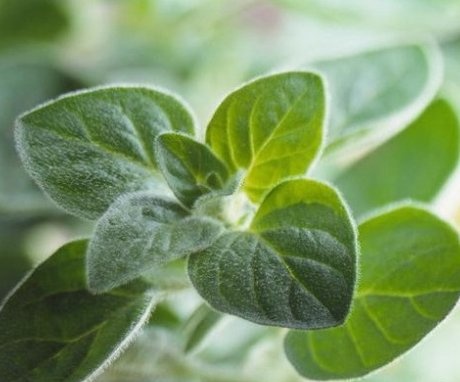
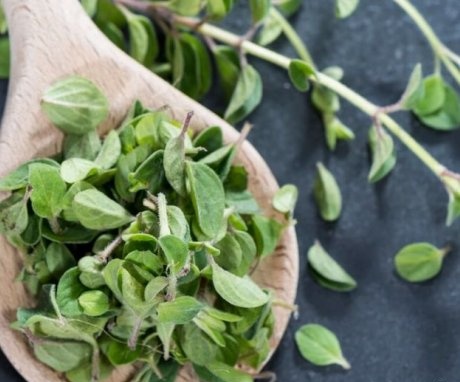
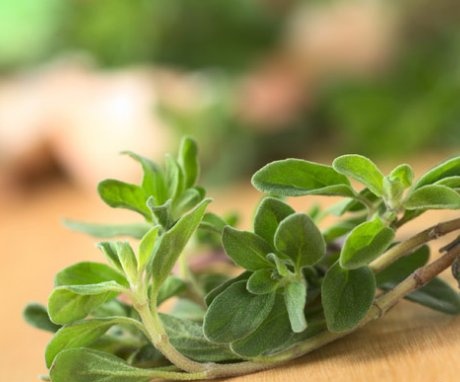
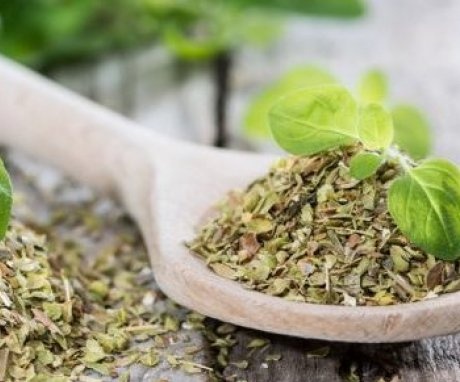
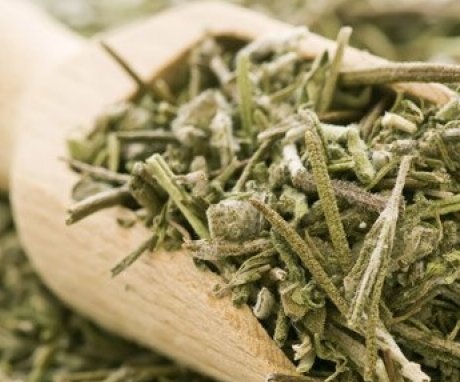
I have never dried the leaves and flowers of this plant, although in the country I always plant it with seeds. In the summer, I actively add leaves to salad and when frying meat, even when marinating a kebab. But when canning, its use gives a negative experience, the brine in cans with such an additive often becomes cloudy.